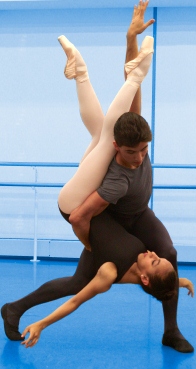The Joffrey’s Choreographers of Color
By Britt Julious

The Joffrey’s Choreographers of Color
By Britt Julious
Contemporary dance is an underrated art form, even in Chicago, where the breadth of companies and performers is as diverse as the population it seeks to entertain. For many people, dance performances are inaccessible because of stereotypes regarding social class and age. Unlike theater or film or art, the most visually recognizable and misunderstood genre of dance is ballet. This identity, born out of the precision of the movements and its long history as an evening activity of the upper classes, overshadows the multitude of dancers and choreographers creating unique, experimental, and important new works.One such company that seeks to showcase emerging performers and choreographers is the Joffrey Ballet. On Sunday, March 10, the Joffrey will premiere their “Choreographers of Color” program featuring performers from a new generation of dancers in the Joffrey Training Academy. The show begins at 4 p.m. and tickets may be purchased online. In its third year, the Joffrey’s Choreographers of Color Award recognizes young minority choreographers in order to provide a unique perspective to the world of dance. Featuring four world premieres, this annual performance is both a welcome introduction to the world of dance as well as an important moment for the choreographers and the Joffrey.

It is a work about what it means to be a modern Black woman, the push and pull of the beauty and the groundedness, and the pursuit of a fulfilling existence against adversity and struggle.
In the debate about the need for more diversity in varying artistic fields, it is encouraging to see the Joffrey both attempting to address this issue and doing so on a regular basis. For a field that is often maligned for its inability to connect with younger or different audiences, the ongoing presence of the Choreographers of Color Award is a refreshing treat for Chicago audiences.
One might wonder why it’s only a one-off performance once a year and why such a diverse line-up is relegated to the its own show rather than incorporated into the regular line up from the company or the Academy. As a whole however, some effort is better than none at all. As long as other companies and artists refuse to acknowledge their homogeneity, we will continue to see the same degrees of storytelling. It is a cycle that needs to be broken.
Follow Britt on twitter @britticisms.

